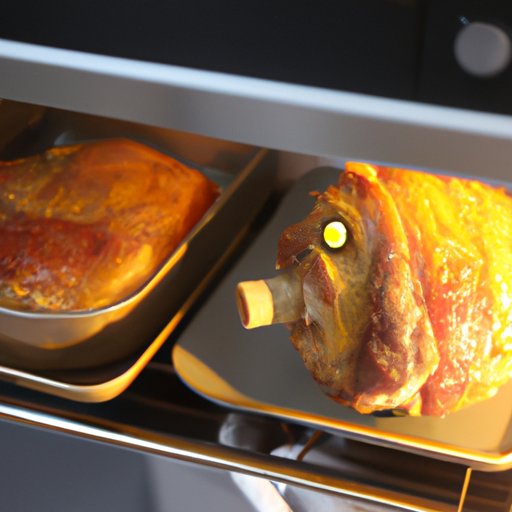
Introduction
Rump roast is a classic dish that has been around for centuries. Widely popular in the United States and Europe, this hearty cut of meat is loved for its rich, beefy flavor and versatility. However, cooking a rump roast can be intimidating and challenging for those who have never done it before. In this article, we will provide a comprehensive guide on how to cook a rump roast, along with different recipes and tips to create the perfect meal.
Culinary History
Rump roast has its roots in the 19th century, where it was a popular dish among the working class in England and the United States. During this time, it was considered a cheap and flavorful cut of meat that could feed a large family. As time went by, rump roast became widely popular among different social classes, eventually making its way to high-end restaurants and the kitchens of top chefs.
In terms of culinary significance, rump roast is important for its versatility and flavor. It is a great option for those on a budget, as it is often less expensive than other cuts of meat, but it still delivers a rich taste when cooked properly.
Nutritional Value
Beef, in general, is an excellent source of protein and essential nutrients like zinc, iron, and vitamin B12. Rump roast is no different and is a great option for those looking to include more protein in their diet. However, it is important to consume beef in moderation, as it is a high-fat meat and can be high in calories. When prepared correctly and consumed as part of a balanced diet, rump roast can be an excellent addition to your meal plan.
Step-by-Step Guide
The first step in cooking a rump roast is to prep the meat. Start by removing any excess fat and trimming the meat to your desired size. You can also season the meat with salt, pepper, garlic, and other spices, depending on your taste preferences.
Once the meat is prepped, it’s time to cook it. There are different methods for cooking a rump roast, but the most popular ones include slow-roasting, pan-searing, and braising.
When using a slow-roasting method, preheat your oven to 250-275°F and place the meat in a roasting pan. Cook for 3-4 hours until the meat is tender and juicy.
If you prefer to pan-sear the meat, heat oil in a skillet over medium-high heat, then sear the meat until it’s brown on both sides. Then transfer to a preheated oven and roast until it’s cooked to your desired temperature.
Braising involves cooking the meat in a liquid over low heat for a long period, resulting in a tender and flavorful dish.
Once the meat is cooked, let it rest for at least 10-15 minutes before slicing it. This step is essential as it allows the juices to redistribute evenly throughout the meat.
Recipe Variations
One of the great things about cooking rump roast is that there are different ways to prepare it. Here are some recipe variations to try:
Herbed Rump Roast: Mix together your favorite herbs like rosemary, thyme, and parsley. Rub the mixture onto the meat and roast as usual.
Braised Rump Roast: Add chopped vegetables like onions, carrots, and celery to a pot with the meat, along with beef broth or red wine. Let it simmer on low heat until the meat is tender.
Equipment Recommendations
When it comes to cooking a rump roast, you can use different equipment, depending on the method you choose. For slow-roasting, you can use a roasting pan, while a cast-iron skillet is recommended for pan-searing. For braising, a Dutch oven or heavy-bottomed pot is ideal.
Regardless of the equipment you choose, make sure it’s of high quality and can withstand high heat and heavy use. A meat thermometer is also a great investment to ensure that your meat is cooked to perfection.
Serving Suggestions
Rump roast is a versatile dish that pairs well with different side dishes. Some popular options include roasted vegetables, mashed potatoes, and baked sweet potatoes. As for wine pairings, a bold red like Cabernet Sauvignon or Syrah works well with the rich flavor of the meat.
One great thing about rump roast is that it can be used in other dishes once cooked. You can use leftovers to make sandwiches, soups, and stews, among other things.
Seasonal Cooking
If you’re looking to make your rump roast more festive, you can experiment with different seasoning and herbs to suit the season. During the holidays, try using seasonal spices like cinnamon, nutmeg, and cloves to add warmth and depth to your dish. You can also add festive ingredients like cranberries, apples, and sweet potatoes to create a dish that’s both comforting and delicious.
Conclusion
Learning how to cook a rump roast may seem daunting, but with the right equipment and recipe, it’s a delicious dish that everyone can enjoy. By following the steps and tips outlined in this article, you can create a juicy, flavorful roast that will leave your family and friends wanting more. Remember that cooking is both an art and a science, so feel free to experiment with different ingredients and cooking techniques to find what works best for you.




